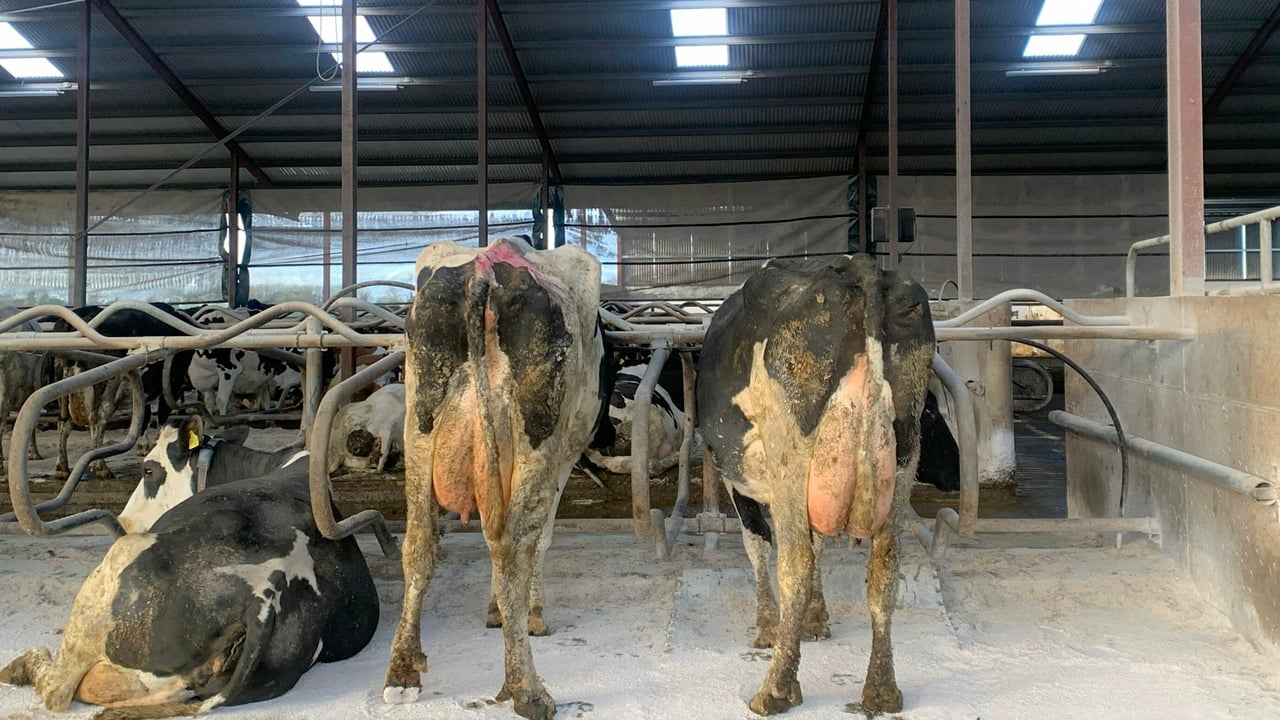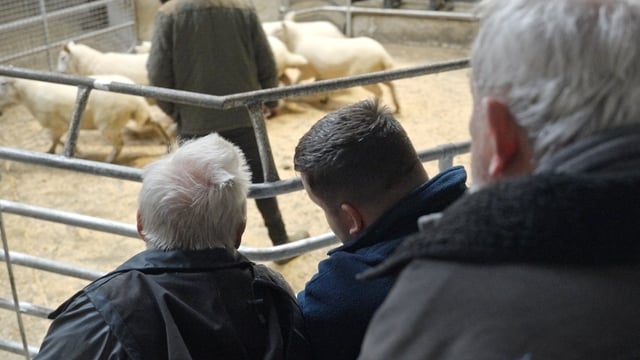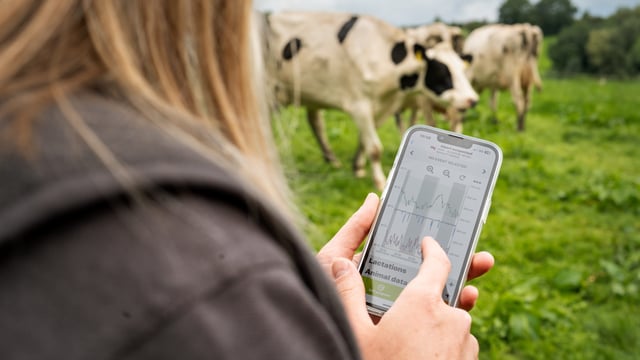Preventing negative energy balances in the winter milking herd
As winter milking herds head into the midst of calving, managing energy levels in freshly calved cows is crucial to ensuring your herd's health and productivity.
Dairy cows commonly enter a negative energy balance (NEB) just before calving, and can remain in a deficit for several weeks post-calving if correct diets are not adhered to.
NEB is typically most prominent two weeks post-calving, as energy requirements rapidly increase to facilitate the animal's increasing milk production.
To maintain milk production in this period, the cow will begin to source energy from her body reserves, commonly known as 'milking off her back'. This will lead to a rapid decline in body conditioning.
Insufficient energy in the milking cow's diet can also result in low milk protein, low milk yields, poor fertility, and poor immunity.
The majority of the herd will have some degree of NEB during early lactation. It is preventing prolonged NEB that farmers must aim for.
According to Teagasc, indicators of NEB issues in the herd are:
- Less than 15% of early lactation cows with milk protein <3.05%;
- Less than 15% of cows with a milk fat: protein ratio >1.4;
- Less than 25% of cows with >0.5 units of body condition score (BCS) loss in early lactation.
Prolonged NEB also commonly leads to metabolic disorders such as ketosis, fatty liver, and displaced abomasum.
Diet
The majority of the herd will realistically be in a slight NEB post-calving, however this can be quickly resolved by feeding cows the correct diet.
When a cow calves down, she will be eating approximately 13-15kg of dry matter (DM) daily, this intake will then increase by 0.8kg DMI per week for the first 10 weeks after calving.
Therefore, the priority has to be to increase the cow's DMI in early lactation, especially considering how a freshly calved cow will only eat around half of her required intake in the first week post-calving.
Grazed grass is the most faboured source of feed during this time, as quality forage will drive intake and energy levels.
Getting the winter milking herd out may not be possible for farmers, depending on their location in the country, though getting them out for a few hours after milking to strip graze might still be an option.
Farmers should also note that the wet weather over the last few days will have a negative impact on grass utilisation, and DMI will drop 0.4kg for every 1% drop in grass DM under 18%.
Through trial and error, you should be able to calculate the amount of grass your herd needs and allocate that accordingly for short grazings, you must then adjust the forage-based diet if cows are back in for the night.
Analysing post-grazing residuals is also important to ensure cows are not going too tight and poaching land, as you will want quality grass in spring for both spring calvers and 'second-peak' winter milkers.
During this time, most farmers will use concentrates to make up the DMI, using the following rule of thumb to calculate the concentrates needed per litre produced:
- In full time: 0.33kg of concentrates/L;
- In by night: 0.22kg of concentrates/L;
- Out full time: 0.11kg of concentrates/L.
It is also important to remember how stressful the transition period can be for a cow, so keeping their routine consistent and preventing any drastic changes in the diet should improve production and prevent condition loss.
At this time, protein and fibre availability are also quite important and ideally should be analysed as fibre can be the limiting factor when it comes to how much a cow can physically eat, while protein is a key driver of the milk yield potential.
BCS
Closely monitoring a cow's body condition score (BCS) is also necessary in this period, as rapid loss in condition highlights prolonged NEB as well as metabolic disorders such as ketosis.
The transition period is heavily dependent on the dry cow period, as cows with BCS under 3 at calving being more likely to suffer from these issues.
When assessing a cow’s BCS, you should use your hand to check the fat cover over the loin, plates, and pin bones of the pelvis and tail areas.
Try to have the same person assessing all the cows in a bid to remain consistent, as every person scores cows differently.
Cow which have lost 0.5 BCS in their assessments over the first six weeks after calving are most likely suffering from NEB or metabolic issues.
A 0.5 BCS loss translates to approximately 25kg loss in bodyweight for a 600kg Friesian cow, which is roughly 4% of their mature body weight.





